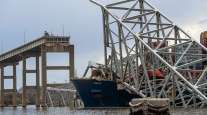Staff Reporter
Traffic Getting Worse Amid Good Economy, Report Finds

[Stay on top of transportation news: Get TTNews in your inbox.]
Traffic across the country continues to worsen as the economy remains strong, according to the Texas A&M Transportation Institute’s recently released 2019 Urban Mobility Report.
TTI’s report, released Aug. 22, examines traffic conditions in 494 urban areas nationwide. According to the study, travel demand in cities of all sizes has exceeded the transportation system’s ability to meet that demand.
The report indicates the cost of congestion, in terms of time and money, continues to climb. For example, the average commuter faced a yearly delay of 54 hours because of traffic in 2017, an increase from 47 hours per year lost in 2012. Some 3.3 billion gallons of fuel were wasted in traffic in 2017.
“The problem affects not only commuters, but also manufacturers and shippers whose travel delay costs are passed on to consumers,” Bill Eisele, a TTI senior research engineer and co-author of the report, said in a statement.
Travel demand and the country’s robust economy are inextricably linked, according to the report. The U.S. added 1.9 million jobs between 2016 and 2017. Although this figure marks slower growth than the 2.3 million jobs added in four of the past five years, it was enough growth to continue to snarl the country’s already constricted transportation system.
Rajeev Dhawan, director of the Economic Forecasting Center at the J. Mack Robinson College of Business at Georgia State University, said increased congestion is the expected result of a strong economy. He explained that, when the economy is booming, more people and things — ranging from workers and vacationers to construction materials and food — are hitting the road.

Dhawan
Citing the phrase “there’s no free lunch,” Dhawan said freight companies must consider the cost of operating in congested conditions. They may reroute their trucks and pay more for the drivers’ time, or they may choose to have their trucks sit in congestion and pay more for fuel.
“If you want to have growth, you will have to pay the price of congestion,” Dhawan said. “At the same time, the transportation industry should remember that if the economy wasn’t growing, there wouldn’t be demand for their services.”
Congestion is worst in large urban areas, particularly those located along coasts or near big ports, the report indicates. Many of the areas listed in TTI’s report, including Los Angeles, Atlanta, Houston and Chicago, appear high on the American Transportation Research Institute’s truck bottlenecks report, unveiled Feb. 12.
“They are major freight centers and freight generators,” ATRI Senior Vice President Dan Murray said. “Oftentimes, they’re at the epicenter of multiple freight corridors coming together.”

Murray
TTI’s report projects that congestion woes will continue to grow. It estimates the national congestion cost will expand from $166 billion in 2017 to $200 billion in 2025, and wasted fuel will increase to 3.6 billion gallons in 2025, a 9% increase from current figures.
The report presents a host of solutions to ease movement along the clogged transportation system, such as more roads and transit, telework options and smarter land use. Technological advancements, including connected vehicles and infrastructure, also have the potential to facilitate the movement of people and goods, according to the report.
“No single approach will ever solve this complex problem,” said Tim Lomax, a TTI research fellow who co-authored the report. “We know what works. What the country needs is a robust, information-powered conversation at the local, state and national levels about what steps should be taken. We have many strategies; we have to figure out the right solution for each problem and a way to pay for them.”




